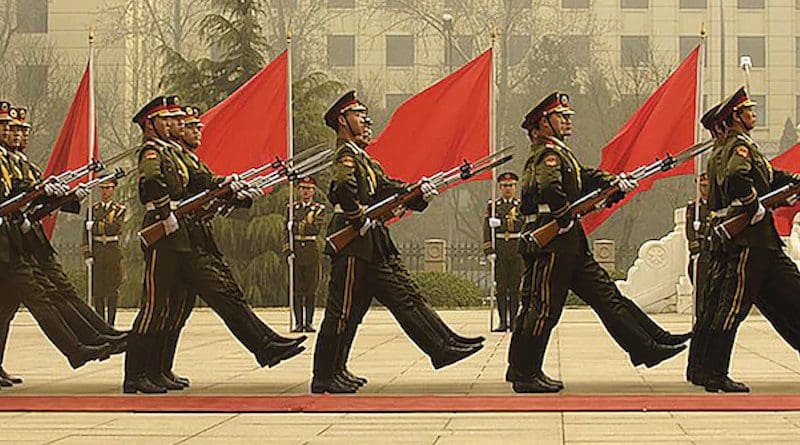The Shanghai Communiqué And China’s Road To A Not-So-Harmonious Rise – Analysis
By IPCS
By Vice Admiral Vijay Shankar
With the landmark 1972 US-China Shanghai Communiqué, the world expected China to transform from a repressive communist state to a benign, capitalist one. However, half-century later, we find a rich, expansionist, and militaristic Beijing that denies established rules, and is led by an iron-fisted autocrat who promotes predatory economic and revisionist policies—and is in power for life. Added to all this is its nuclear support and proliferation to rogue states.
Ultimately, China’s grand strategy is keyed to the attainment of three objectives: preservation of dispensation; creating a sphere of control in which its territorial expansion and writ remain unchallenged; and a geopolitical order in which Beijing is the primary influencer. Its territorial ambitions and rapacious policies have given impetus to the alignment of states to confront and contain it.
The Chinese Concept of ‘Shi’
When Xi Jinping took office in March 2013, he was ‘elected’ president in a confirmation vote by the National People’s Congress in Beijing. Most countries felt Xi’s ‘ascension’ represented more continuity, persistence with tenure-based leadership, more liberal reforms, and a closer draw into a globalised world. China’s declared goal was to achieve a ‘harmonious rise.’ There was also a desire for rejuvenation and of China’s centrality, though much of the world dismissed this as rhetoric from the nationalistic fringe. To Xi, his predecessors, and the party, however, rejuvenation and centrality were in fact obsessions that had endured the mass carnage of the Great Leap Forward, Cultural Revolution, and of Tiananmen.
In this milieu, looking back to China’s unabridged welcome into the world in 1972 emerges as a strategic blunder. Was it conceived as a tactical artifice to benefit from the Sino-Soviet rift and checkmate Kremlin’s expansionism? Or, was it a deliberate strategy to bring China permanently into the Western bloc? It was based, as Henry Kissinger writes in his book, White House Years, on three “rosy assumptions”:
- The catastrophic failure of the Great Leap Forward and Cultural Revolution put China in a precarious political situation, and ideologically ripe for change
- Beijing needed the west’s support to break out of its isolation. Engagement was the precursor to cooperation and joining the anti-Soviet bloc
- China had a deep seated desire to join in the prosperity of the west. Making it a stakeholder in global order would set it on the path to liberal democracy.
The Shanghai Communiqué promised, in theory, the rapid fruition of these three “rosy assumptions.” Notably, China pledged to avoid power politics, respect regional sovereignty, and pursue fair and peaceful competition.
After the Shanghai Communiqué
China’s calculus, however, was on a grand strategic plane. It was to deny Moscow and the west from geopolitically encircling China; induct much needed technological, economic, and military boost to bring about a seeming ‘harmonious rise’; and, in time, challenge the lone superpower. Half a century later, it is apparent which stratagem worked.
The Communiqué today is thus in tatters. Countries have finally recognised the reality regarding China—particularly so where sovereignty, security, and acceptance of international laws/conventions are concerned. Before this realisation, the general inability to understand Chinese strategists, their assessment of the existing balance of power, and application of shi or “the constant search for a strategic advantage,” led to not just fuelling China’s dazzling growth but also promoting its grand strategy of ‘national rejuvenation’. In classic terms, ‘shi’ comprised the use of deception to attain strategic advantage. It was shi that triumphed.
Four international law considerations key to our understanding of a sovereign state are: possession of a permanent population, single government rule, ability to form diplomatic relations with sovereign states, and critically, territory that is clearly defined. With China, it is territorial definition that is intractable and stymies normalisation of relations. Its territorial demands cut through the established boundaries of 16 sovereign states and carve out vast maritime space encompassed by the ‘nine-dash line’.
As for Beijing’s pledges, they have long since been dumped. In this circumstance, it was never clear how the preyed-upon were expected to accept the Communiqué and the Chinese order of things. It is also still a geopolitical inexplicability that Beijing was not only welcomed by ‘balance of power’ enthusiasts, but also a west that had deluded itself about China willing to be another cog, rather than the pivot, of the existing international system.
Making Amends?
The kind of nation China will be, its place in global order, and the type of military it will command by 2049: these are neither pre-destined nor immutable. For China, the idea of a multipolar world is just a strategic milestone on the road to ‘rejuvenation’—a metaphor for dominance in a unipolar world. In the absence of Chinese policies that promote cooperation and consensus, the formation of alliances and structures that regulate global order is an inevitable consequence. The Quad and AUKUS are already taking shape and are the two most dominant examples of a strategic template for order the Indo-Pacific. How Beijing interacts with the international system in the intervening years will determine the realisation of its dream, or otherwise.
Vice Admiral Vijay Shankar (Retd) is Distiguished Fellow, IPCS, and former Commander-in-Chief of the Strategic Forces Command of India.

